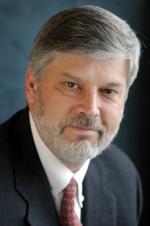Finance Class Project Focuses on the Food Future of Western Mass.
December 13, 2019

“Food sovereignty, food justice, and food security” are among the qualities consumers increasingly value, noted Isenberg junior Naomi Lau in an end-of-the-semester presentation in Professor Mila Getmansky Sherman’s course, Alternative Investments. Lau and four other members of a student team (Brian Cahill, Pamela Guo, Isaac Paparo, and Lauren Tufano) worked closely with Isenberg MBA alumnus Michael Philipp ’82 to evaluate the pros and cons of investing in a food hub in the Pioneer Valley. Food hubs, the team explained, are organizations that act as go-betweens connecting farmers and producers of local and regional food products with consumers, including restaurants, stores, and individuals.
Why invest in sustainable, local alternatives? Inelastic consumer demand for food, said team member Brian Cahill, will always be with us. Environmental, social, and governance priorities—including food hub initiatives—are all trending upwards. “Forty percent of the food produced in the United States goes to waste,” he observed. Food in landfills, moreover, accounts for 17 percent of climate-impairing emissions. And Philipp, the project’s alumni sponsor, offered additional advice: “When you’re looking at trends, it’s good to invest early.”
The team’s project aimed to help achieve a goal of having local sources provide 50 percent of the region’s food consumption by 2060 (a.k.a. the 50 by 60 standard that has been proposed by a regional nonprofit called the New England Food Vision). That, they said, would require significant changes in diet and land management. Fortunately, they observed, the region has a strong head start with farmers, co-ops, and vendors committed to sustainable farming practices, local sourcing, and the 50 by 60 goal.
How to Launch a Food Hub
To make it all happen, the team offered a to-do list of recommendations. The new proposed hub would expand food’s shelf life through flash freezing, which blasts food with extremely low-temperature, circulating air. It would implement a profit-sharing plan for farmers and suppliers and invest in solar and other sustainable energy sources and storage. And it would de-emphasize processed food and meat, relying on other states for the much of the latter. A smart way to effect behavioral change among consumers, added Lau, is to focus—at least initially—on food services at institutions, UMass included.

“We decided to locate the hub in a 13,000-square-foot facility in Springfield because of its centrality to the region’s markets and its proximity to Connecticut and New York,” observed Cahill, who added that the most significant competitor would be the Franklin County Community Development Center in Greenfield, which works with farmers and producers to start new food businesses and assist with production and distribution. “But geography,” Cahill said, “is on our side.”
“Investments in food and energy have much in common,” observed Michael Philipp. “If you invest irresponsibly, you degrade the environment.” The Isenberg alum walks that talk as managing partner of Ambata, a New York-based international advisory and investment firm that focuses on clean energy and sustainability in emerging markets. He is also a board member at Reykjavik Geothermal, based in Iceland. In an earlier life, Philipp was chairman and CEO of Credit Suisse Europe, Middle East, and Africa. “I’ve talked to the authors of the 50 by 60 plans,” he remarked. “If it doesn’t become 50 by 30, we may run out of time—as a species.”